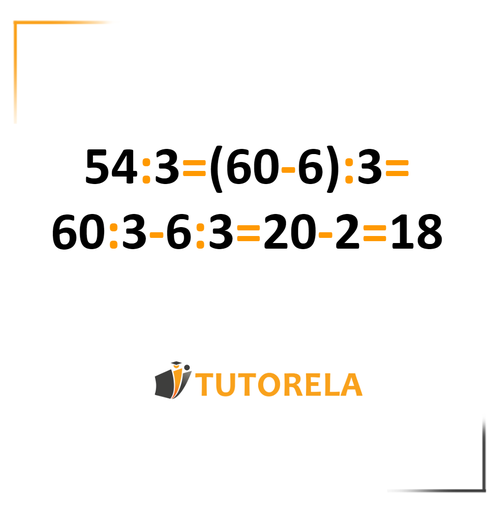The distributive property of division allows us to break down the first term of a division expression into a smaller number. This simplifies the division operation and allows us to solve the exercise without a calculator.
When using the distributive property of division, we begin by breaking down the number being divided by another, the dividend.
For example:
We break down into .
The value remains the same since
Both and are divisible by and, therefore, the calculation is much easier.
